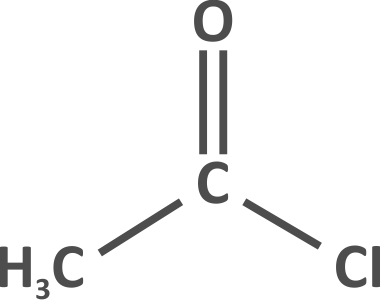
An acyl group is a functional group defined by the molecular formula of R-CO. Functional groups are portions of a molecule known to be a recognized group of bonded atoms. Think of an R group as any molecule or atom you can attach to the carbon atom in RCO. Examples of different acyl groups, highlighting the R group is shown.
Examples of Different Acyl Groups
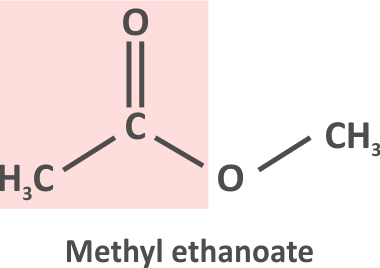
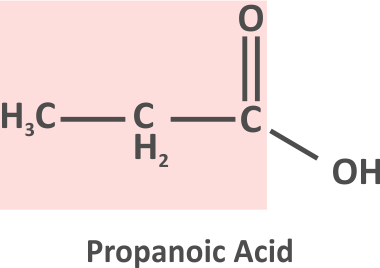
The molecular formula for acid chloride is RCOCl. The acid chloride family belongs to a larger organic family called the acyl halides. Acyl halides are organic compounds that have an acyl group attached to a halide group. Halide is an element group name for chemical elements belonging to the halogen family on a periodic table.
Highlight of Acyl Group and Chlorine Atom in Acetyl Chloride
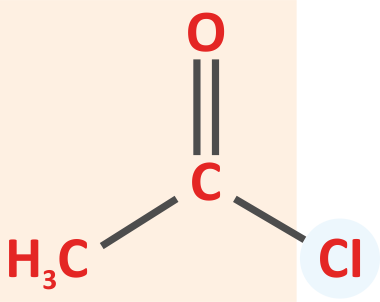
Acid chlorides are also known generically as acyl chlorides.
Acid chlorides are named according to the same system as other organic compounds. In the simplest case of linear acid chlorides, the suffix -oyl chloride is added to the stem used to indicate the number of carbon atoms in the longest chain within the molecule. That is, when naming acid chlorides the first step is to consider the number of carbon atoms forming the longest chain within the molecule. The simplest situation is when all the carbon atoms in the molecule are attached together in a linear (i.e. unbranched) configuration. In that case the number of carbon atoms forming that single chain is the same as the total number of carbon atoms in the molecule. After identifying the longest carbon chain in the molecule use the number of carbon atoms forming that chain to look-up the most likely stem of the name of the molecule using the same system as used for naming alkanes
| Carbon atoms in chain | Name & simple formula | Simple Structure | Example of other names (synonyms) |
|---|---|---|---|
| 1 | formyl chloride (CHClO) CHOCl |
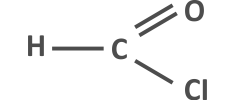 |
|
| 2 | ethanol chloride (C2H3ClO) |
.png) |
|
| 3 | propanonyl chloride (C3H5ClO) |
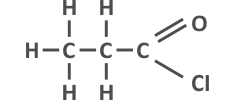 |
|

The conversion of carboxylic acids to their corresponding acid chlorides occurs rapidly in the presence a tertiary amine base and 3,3-dichlorocyclopropenes via aromatic cation-activated nucleophilic acyl substitution. The effect of cyclopropene substituents on the rate of conversion is examined. Conditions were developed for the preparation of acid sensitive acid chlorides.
D. J. Hardee, L. Kovalchuke, T. H. Lambert, J. Am. Chem. Soc., 2010, 132, 5002-5003.

The reaction of tert-butyl esters with SOCl2 at room temperature provides acid chlorides in very good unpurified yields, whereas benzyl, methyl, ethyl, and isopropyl esters are essentially unreactive.
J. A. Greenberg, T. Sammakia, J. Org. Chem., 2017, 82, 3245-3251.

Using an efficient visible-light photocatalysis-based method, a mixture of an aldehyde, tert-butyl hydrogen peroxide, and N-chlorosuccinimide afforded an acid chloride in the presence of Ru(bpy)3Cl2 as photocatalyst. A subsequent reaction with an amine provided the corresponding amide.
N. Iqbal, E. J. Cho, J. Org. Chem., 2016, 81, 1905-1911.

Shree Ganesh Remedies Limited, with its chemical reaction technologies, especially in chlorination using thionyl chloride, is now leading manufacturer and exporter of Acid Chlorides. SGRL has list of leading companies as clients from America, Europe, Middle East, Asia and Australian countries. Chemical reaction technologies like Chlorination with thionyl chloride and chlorine, Bromination, Hydrogenation / Reduction, Oxidation, Grignard Reactions, Acylation allows SGRL to manufacture products with customization and contract chemistry can be developed.
Expertise of SGRL in Acid Chlorides Manufacturing and Chlorination Capabilities